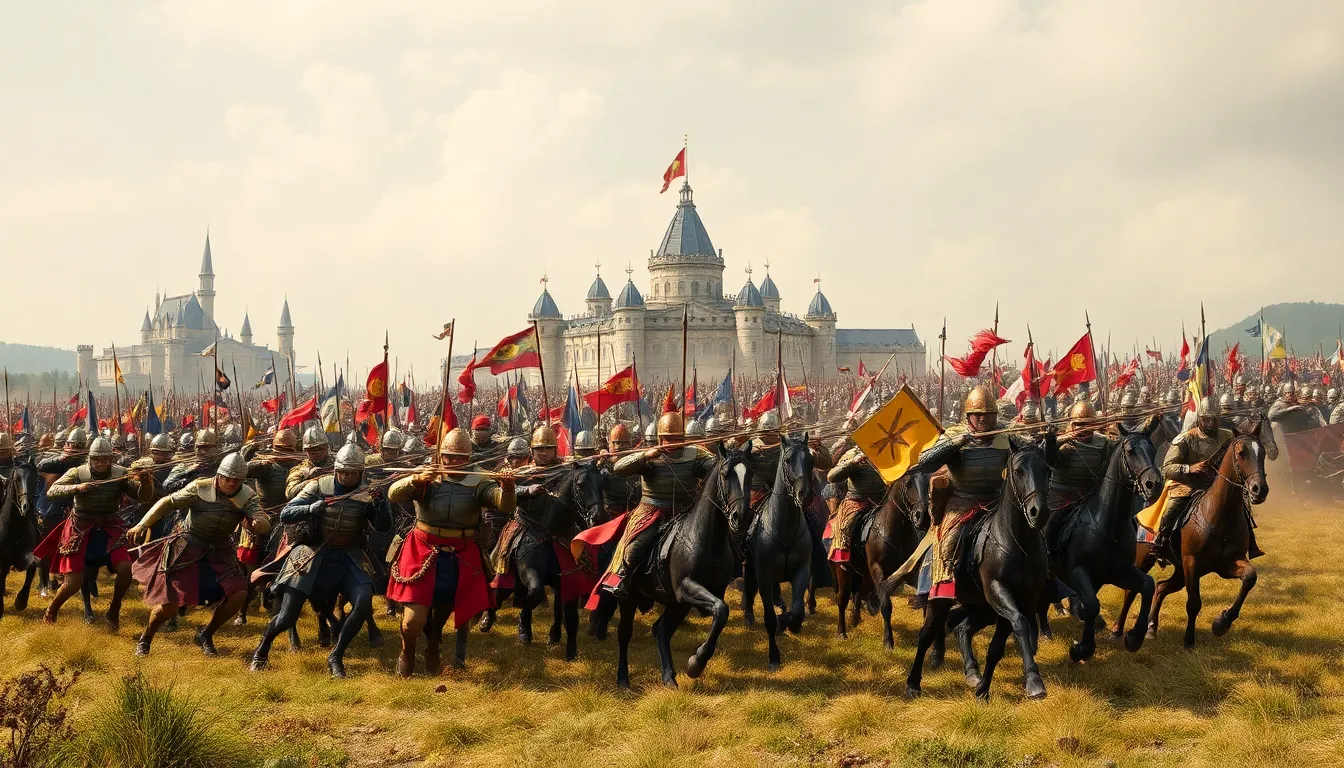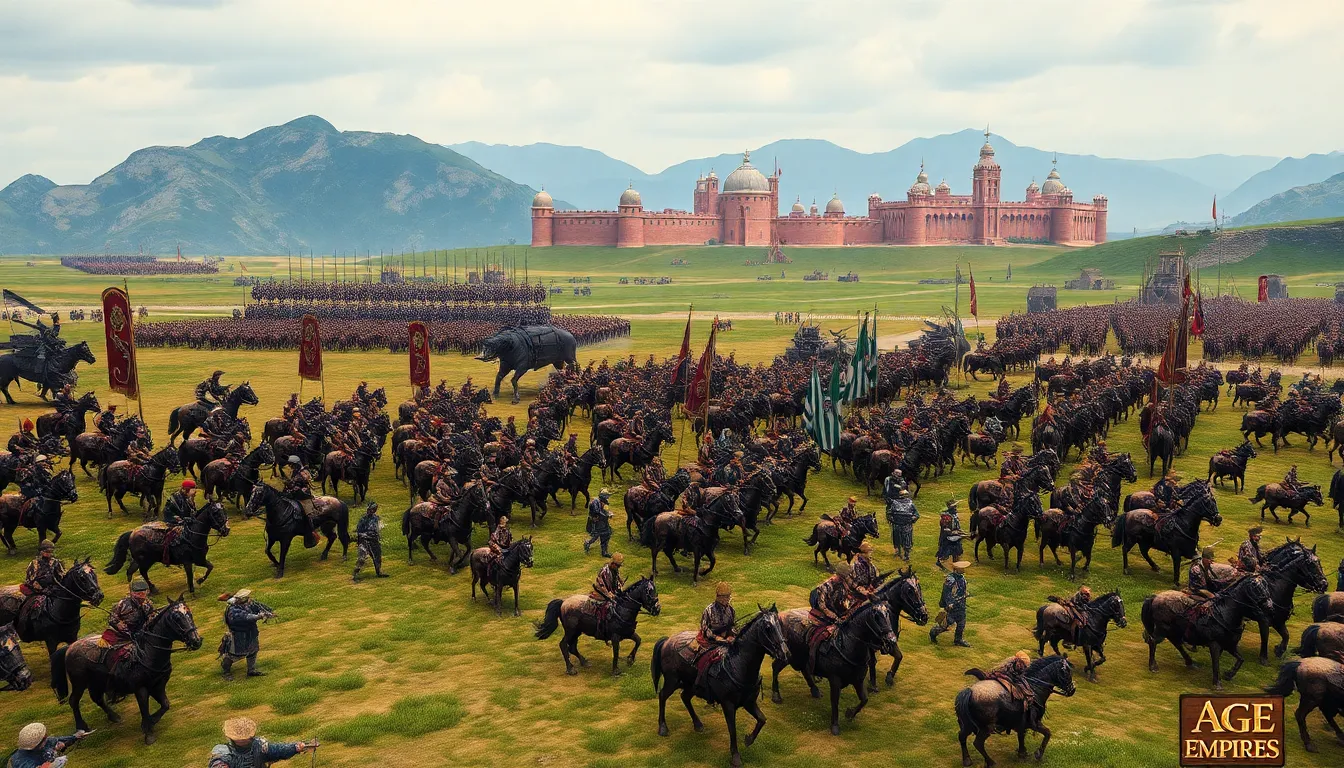In the epic world of Age of Empires, assembling the perfect army isn’t just a strategy; it’s an art form. Picture this: you’ve got your knights charging in, archers raining down arrows, and siege engines ready to bring the house down. But wait—what’s that? A lone villager sneaking past your defenses? Suddenly, your carefully crafted war machine feels more like a paper mache project at a kindergarten craft fair.
Table of Contents
ToggleOverview of Age of Empires Army Composition
Assembling an effective army in Age of Empires requires understanding unit types and their roles. Knights excel in melee combat, providing strong offensive capabilities and durability. Archers serve as ranged attackers, crucial for dealing damage from a distance while remaining safe from direct confrontation. Siege engines, such as catapults and trebuchets, specialize in demolishing structures and providing essential support in lengthy battles.
Balanced composition dictates success in combat scenarios. Combining infantry, cavalry, and siege units creates a versatile strategy to counter various threats. Infantry offers resilience and frontline defense, while cavalry can swiftly maneuver and flanking enemy positions. Flexibility ensures adaptability to changing battlefield conditions.
Even the best compositions face vulnerabilities. Fast-moving units might exploit gaps in the defense, targeting unprotected resources or vulnerable villagers. Ignoring map awareness may lead to unexpected ambushes, emphasizing the importance of scouting and positioning.
Unit synergy plays a vital role in effectiveness. For instance, combining knights and archers can yield a formidable front line; archers launch high-damage attacks while knights absorb incoming blows. Additionally, including support units like monks provides healing and unique capabilities that strengthen the army.
Understanding enemy forces influences army choices. Anticipating opponents’ strategies allows for targeted adaptations, such as countering cavalry with spearmen. Monitoring unit strengths and weaknesses creates opportunities to exploit enemy errors and establish dominance.
A successful army composition in Age of Empires hinges on strategic planning, effective resource management, and adaptability. Emphasizing versatility ensures the army can face diverse challenges and maintain a competitive edge throughout the game.
Key Factors Influencing Army Composition


Effective army composition in Age of Empires hinges on various key factors that shape strategy and gameplay. Understanding unit types and civilization bonuses greatly influences decisions on troop assembly.
Unit Types
Infantry, cavalry, and siege units each serve distinct roles. Infantry provides a solid foundation, excelling in close combat and withstanding enemy assaults. Cavalry, on the other hand, offers rapid mobility and devastating charges, perfect for disrupting enemy lines. Ranged units like archers deliver consistent damage from a distance while keeping themselves safe from direct conflict. Siege units hold specialized functions; they break down enemy structures and fortifications, ensuring a path for advancing troops. Balancing these unit types creates a versatile army that can adapt to dynamic battlefield scenarios.
Civilization Bonuses
Each civilization features unique bonuses that enhance army effectiveness. Some civilizations speed up unit production, allowing players to field larger armies quickly. Others benefit from stronger cavalry or increased durability for siege engines, providing strategic advantages in combat. Adaptation to these bonuses informs military choices. Players can capitalize on their civilization’s strengths, making decisions that align with available resources and enemy weaknesses. Understanding these nuances allows for a more impactful army composition that leverages specific advantages, ensuring cohesive gameplay.
Effective Army Compositions
Creating effective army compositions in Age of Empires relies on blending various unit types to ensure versatility and adaptability in combat.
Balanced Compositions
Balanced compositions consist of a mix of infantry, cavalry, and siege units. Infantry forms the backbone, absorbing damage and holding the front lines. Cavalry provides speed and flanking capabilities, allowing quick engagements with enemy units. Siege units like catapults target enemy structures from a distance, disrupting fortifications. Combining these elements supports a flexible strategy. It covers weaknesses and capitalizes on strengths. For instance, if the enemy deploys heavy infantry, archers can target them effectively from behind. Likewise, as cavalry can threaten archers, a strong infantry line is crucial for protection. Players achieve a well-rounded force by maintaining composition balance.
Counter Compositions
Counter compositions focus on exploiting specific enemy unit weaknesses. For example, if facing a cavalry-heavy army, incorporating pikemen can counter them effectively with their high anti-cavalry damage. Utilizing siege units against stationary units, like infantry, proves effective as well. On the other hand, if the opponent uses ranged units, a swift cavalry charge can disrupt their lines before they inflict significant damage. Furthermore, integrating support units provides additional advantages. Monks can heal damaged units, boosting longevity during battles. Understanding the enemy’s composition allows players to devise strategies that negate threats while enhancing their army’s effectiveness.
Strategies for Building an Army
Building an effective army in Age of Empires entails strategic planning and timing. Early and late game approaches require different tactics to ensure success.
Early Game Strategies
Focus on simple unit compositions that maximize resources. Prioritizing infantry units, such as spearmen and militia, provides a strong defense against early aggression. Gathering resources efficiently allows for quick unit production. Also, scouting the enemy’s base gives insight into their strategies and positioning. Coordination of workers to collect food and wood is essential for maintaining a steady flow of units. Combining archers with infantry creates a balanced frontline capable of engaging various threats. This early composition aims to establish map control while deterring enemy advances.
Late Game Strategies
Transitioning into the late game stage involves refining unit compositions and implementing advanced tactics. Armies should adapt to the opponent’s strategy, incorporating counter units such as cavalry and siege engines. Increasing the number of ranged units enhances damage output against fortified positions. Utilizing economy upgrades accelerates unit production, allowing for larger armies. Forming alliances or joint attacks can overwhelm opponents and exploit vulnerabilities. Implementing upgrades from the blacksmith improves unit effectiveness during battles. Effective map control, resource gathering, and unit synergy become vital for sustaining a competitive edge as players navigate through the complexities of late-game engagements.




